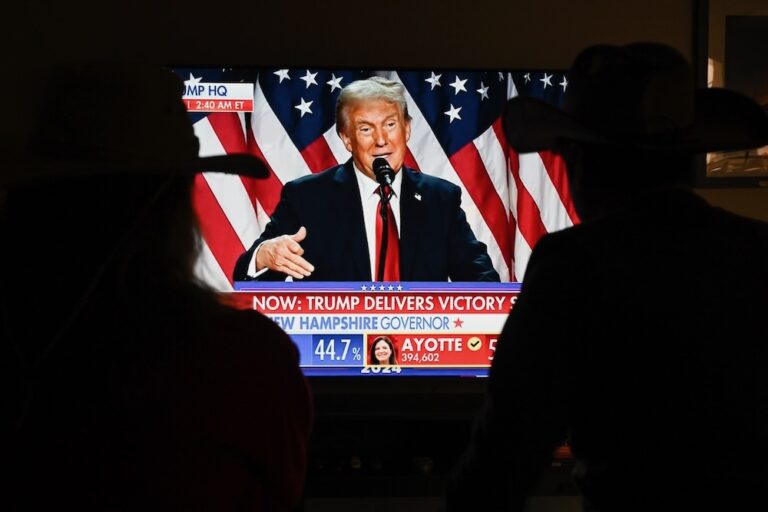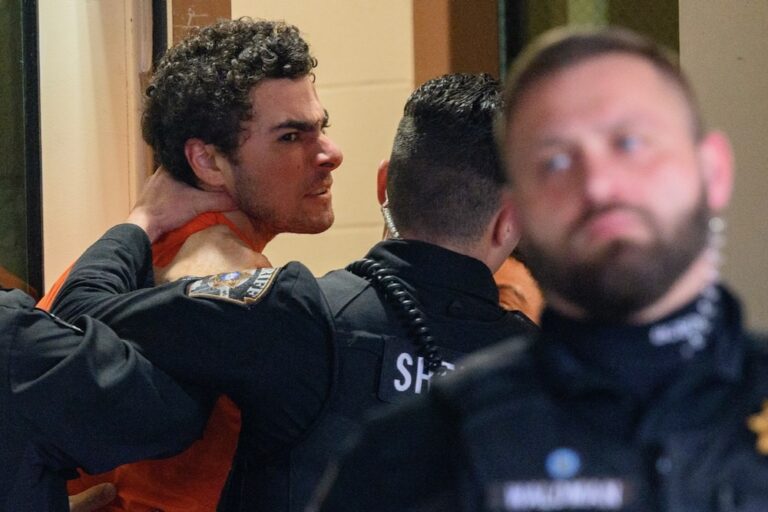(RSF/IFEX) – Reporters Without Borders welcomes the transparency of a US Defence Department report released on 16 June 2008 confirming that US soldiers were responsible for the fatal shooting of Reuters soundman Waleed Khaled in Baghdad on 28 August 2005. The press freedom organisation shares the report’s view that the US military’s rules of engagement […]
(RSF/IFEX) – Reporters Without Borders welcomes the transparency of a US Defence Department report released on 16 June 2008 confirming that US soldiers were responsible for the fatal shooting of Reuters soundman Waleed Khaled in Baghdad on 28 August 2005. The press freedom organisation shares the report’s view that the US military’s rules of engagement need to be harmonised with the procedures followed by the media in dangerous situations.
Khaled drove with Reuters cameraman Haider Kadhem to the Baghdad district of Al-Adil to cover a situation in which an Iraqi police unit had been ambushed. When they arrived, their vehicle came under fire from US soldiers who had rushed to the scene and taken up position on the roof of a building. Khaled, who was at the wheel of their vehicle, was shot once in the face and four times in the chest, and died on the spot. Kadhem sustained only minor injuries.
“The report’s conclusions leave no doubt about the US army’s responsibility,” Reporters Without Borders said. “But its examination of the behaviour of the soldiers and Reuters journalists reveals each party’s ignorance about the rules of engagement and safety procedures followed by the other party. It is incomprehensible that it has taken so long to realise that, five years after the start of the war in Iraq, the US military did not brief the media about the rules that journalists should respect when facing soldiers during clashes in the field.”
Khaled’s death could perhaps have been avoided. It happened because the Reuters crew misunderstood the warning signals from the US soldiers and because the soldiers misinterpreted the TV crew’s intentions when they put their vehicle into reverse in order to leave the scene. The US military criticised the TV crew for entering a fire-fight zone without protective equipment and in an unmarked vehicle. According to the report’s conclusions, there was no reason to think the vehicle’s occupants were journalists, and the soldiers said they thought Kadhem’s camera was an anti-tank rocket launcher.
Reuters advises its staff to withdraw from combat zones when the risks become too great. But the US military’s rules of engagement regard a hasty withdrawal as suspicious. In such situations, the military recommends immobilising the vehicle until the perimeter has been secured. Kadhem and Khaled had not been informed of this.
The situation on the ground in Iraq does not allow journalists to work safely. Armed groups have been operating with impunity throughout the country, targeting journalists, for more than five years. As a result, journalists have to take care not to be identified. In all, 216 journalists and media assistants have been killed in Iraq since the start of the war in March 2003. Most of them were ambushed outside their home or workplace. As a result, many journalists conceal their profession and are unable to go around vehicles bearing their news media’s logo.
A total of 10 journalists have been killed by US gunfire in separate incidents since the start of the war. Three of them worked for Reuters. The reports of the military investigations into these incidents concluded in each case that the victims were shot accidentally.
An initial enquiry conducted by a US officer was disputed by Reuters, which had the services of business consultants specialised in risk management. The officer was accused of failing to respect investigative procedures. The soldiers who fired the shorts were not told to put their statements in writing and went back to their duties without being forbidden to talk about the case so that they would not come to an agreed version of the incident.
The investigating officer also incorporated their statements into his report without trying to question other witnesses. Even more seriously, after the investigation, he lost the original videotape that Kadhem filmed in the minutes prior to the shooting. Nonetheless, the panel that viewed it before its disappearance did not think it contained grounds for disputing the report’s conclusions. The officer submitted his conclusions to his superiors on 31 August 2005, four days after the incident.
The US Defence Department ordered the second investigation after Reuters released its own report on the incident in March 2006. A ballistic study, the autopsy on Khaled’s body, the statements of additional witness and an examination of the scene of the shooting, including estimates of the distances between the target and those who fired the shots, resulted in a more thorough report that lends more credibility to the conclusions, which were similar to those of the initial investigation.
Download the US Defence Department report on http://www.rsf.org


